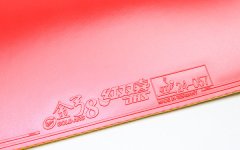This user has no status.
This user has no status.
Member
Hello everyone, hope you all are good.Lets talk about rubbers' specification.
First,is rubber's thickness really matters? What are the advantage or disadvantage of MAX/2.2mm thick rubber & why pro players use MAX?
Second, what is the degree of a rubber?
Third, what are the advantage or disadvantage of tacky rubbers?
Finally, why the numbers in the rubber & what does it mean ? (24-057)
Thanks in advance.

First,is rubber's thickness really matters? What are the advantage or disadvantage of MAX/2.2mm thick rubber & why pro players use MAX?
Second, what is the degree of a rubber?
Third, what are the advantage or disadvantage of tacky rubbers?
Finally, why the numbers in the rubber & what does it mean ? (24-057)
Thanks in advance.











